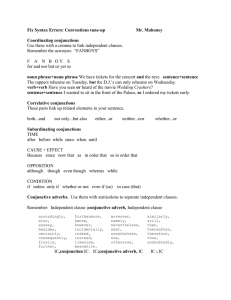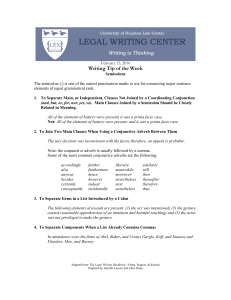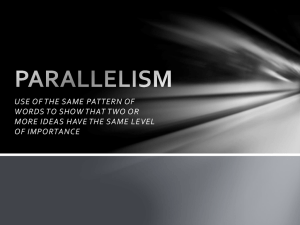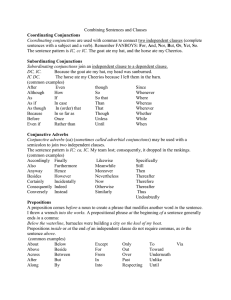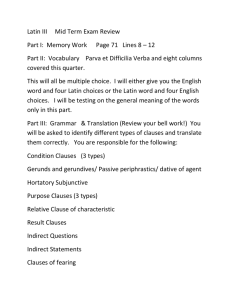What is Coordination and Subordination?
advertisement
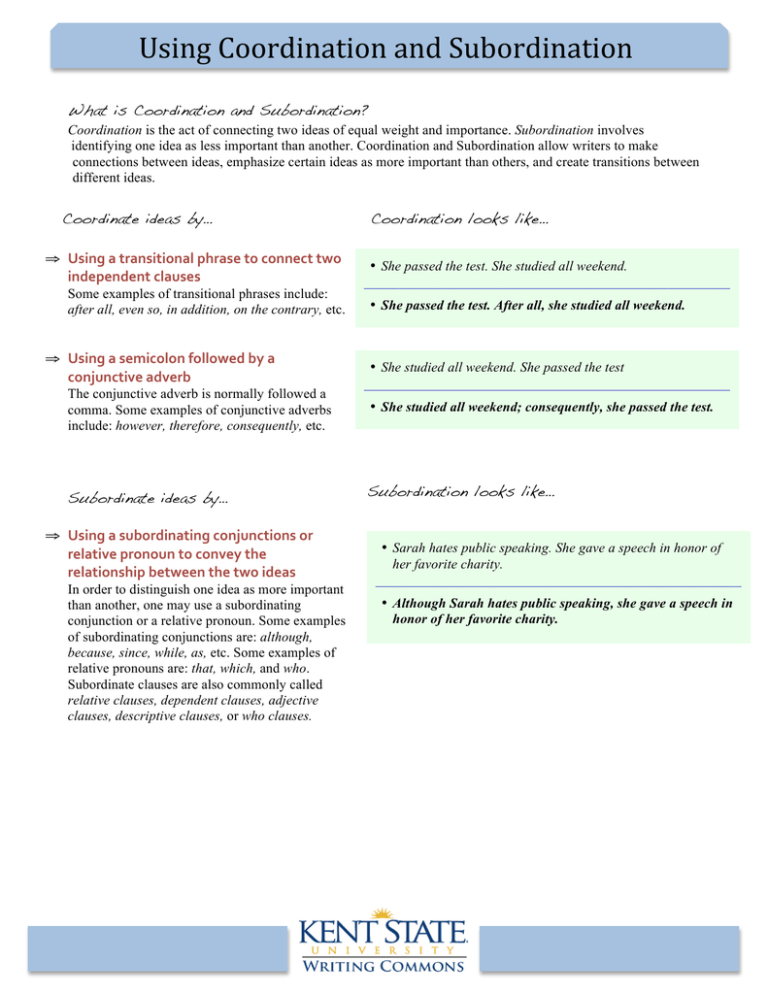
Using Coordination and Subordination What is Coordination and Subordination? Coordination is the act of connecting two ideas of equal weight and importance. Subordination involves identifying one idea as less important than another. Coordination and Subordination allow writers to make connections between ideas, emphasize certain ideas as more important than others, and create transitions between different ideas. Coordinate ideas by… ⇒ Using a transitional phrase to connect two independent clauses Some examples of transitional phrases include: Coordination looks like… • She passed the test. She studied all weekend. _____________________________________________________ • She passed the test. After all, she studied all weekend. after all, even so, in addition, on the contrary, etc. ⇒ Using a semicolon followed by a conjunctive adverb The conjunctive adverb is normally followed a comma. Some examples of conjunctive adverbs include: however, therefore, consequently, etc. Subordinate ideas by… ⇒ Using a subordinating conjunctions or relative pronoun to convey the relationship between the two ideas In order to distinguish one idea as more important than another, one may use a subordinating conjunction or a relative pronoun. Some examples of subordinating conjunctions are: although, because, since, while, as, etc. Some examples of relative pronouns are: that, which, and who. Subordinate clauses are also commonly called relative clauses, dependent clauses, adjective clauses, descriptive clauses, or who clauses. • She studied all weekend. She passed the test _____________________________________________________ • She studied all weekend; consequently, she passed the test. Subordination looks like… • Sarah hates public speaking. She gave a speech in honor of her favorite charity. _____________________________________________________ • Although Sarah hates public speaking, she gave a speech in honor of her favorite charity.
